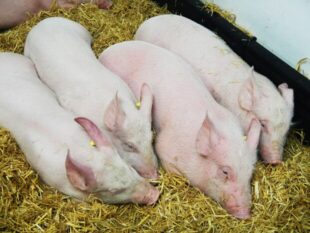https://defrafarming.blog.gov.uk/farm-woodland-standard/
Farm woodland standard of the Sustainable Farming Incentive pilot
The guidance on this page is for SFI pilot participants only. Please visit GOV.UK for the official Sustainable Farming Incentive scheme guidance.
Find out about the standard for farm woodland, what land is eligible and how much you can get paid.
Applications for the pilot have now closed. The Sustainable Farming Incentive 2023 offer is due to launch from summer 2023. To find out more about the SFI 2023 offer, read the SFI Handbook for the SFI 2023 offer.
This information is for farmers piloting the Sustainable Farming Incentive.
How the standard works
This standard has a set of actions you must complete, where relevant, to get paid.
If you’re already doing activities on your land that fulfil the actions in this standard, you can use these areas instead of creating new ones. This means you can maintain existing areas to complete actions that require you to ‘create’ or ‘establish’ something.
Anything you’re doing to complete an action only counts towards that action. It will not count towards the standard’s other actions, unless this guidance says otherwise.
When to complete actions
Because agreements will start from November 2021 at the earliest, it will be too late to complete some actions that must take place after harvest - for example, establishing a green cover by the end of September or mid-October.
Complete these actions within 12 months of your agreement start date. This means you can complete the post-harvest actions after harvest 2022.
Actions that need you to create a new habitat may not be practical during the winter months - for example, sowing a winter bird food mix. You should complete these actions within 12 months of your agreement start date.
If you're amending your agreement to add this standard, or to change the ambition level of this standard in an existing agreement, you'll need to complete all of the actions listed below within 12 months from when the amendment starts. For example, if you're adding this standard to an agreement with a 1 November 2021 start date for the second year of that agreement, the amendment would be effective from 1 November 2022 and the actions for this standard would need to be completed by 31 October 2023.
How much you’ll be paid
In January 2023, we announced the outcome of our Countryside Stewardship revenue payment rates review. We have also reviewed the payment rates for the Sustainable Farming Incentive pilot standards. Payment rates for the farm woodland standard were not changed.
You’ll be paid £49 per hectare of woodland you enter into the standard. This payment rate is annual.
You’ll also get additional payments for doing some actions - the amounts are listed with the actions.
Applications are no longer being accepted for funding for the optional action of expanding your woodland.
What land is eligible
To be eligible for this standard, blocks of established woodland must be:
- over 15 years old (woodland under 15 years may be eligible for the optional action to maintain woodland)
- greater than 20 metres wide on average
- an area greater than 0.5 hectares
Woodland classed as a site of special scientific interest (SSSI) is not eligible.
Changes to the land because you’re completing actions
The land must be eligible at the start date of your agreement.
Changes to the land’s use, composition or cover that happen because you’re completing the actions in this standard do not affect eligibility, and you’ll continue to be paid under this standard, at your chosen ambition level.
Actions
You must do the following actions:
1. Complete a woodland condition assessment
This action will increase your knowledge of your woodland and inform future management.
You only need to complete a woodland condition assessment once in the first year of your agreement. You’ll get a one-off extra payment of £100.
You must complete the assessment for all parcels entered in the woodland standard. Each block of woodland or existing compartment should contain at least one survey plot.
Required documents
You must keep your woodland condition assessment. You do not need to send this to us unless we ask for it.
Information on woodland condition assessments
How you complete this action is up to you, but you can read information on how to complete a woodland condition assessment.
You should keep a copy of your woodland condition assessment.
2. Attend a woodland threats webinar
You’ll get a one-off extra payment of £40 (previous payment rate £25).
The woodland threats webinar is divided into 3 modules, each covering a different topic:
- deer and squirrels
- biosecurity
- pests and diseases
You need to complete all 3 modules once, within the first year of your agreement. It will take you about 1 hour and 30 minutes to complete the 3 modules. You can complete them in any order and retake the assessments without penalty.
If the webinar content is not accessible to you, please contact us by email at GRNationalTeam@forestrycommission.gov.uk.
Required documents
You should complete any module that has a final assessment section with a minimum 80% pass mark, and print or save your certificates in case we need to see them.
3. Create temporary open spaces and manage rides
This action will increase connectivity between habitats.
Aim for approximately 15% of each woodland block to be temporary open space - you should have a minimum of 10% and maximum of 20%.
You must not create new open space in ancient woodland.
If you have to fell trees to create open space, you must check if you need a tree felling licence.
Information on creating and maintaining open spaces in woodland
How you complete this action is up to you, but you can read information on how to create and manage open space in woodland.
4. Create and manage dead wood in woodland
This action provides habitats for wildlife and increases carbon stocks.
Aim for a minimum of 20 cubic metres per hectare standing and fallen dead wood.
If you have to fell trees to create dead wood, you must check if you need a tree felling licence.
Information on managing dead wood
How you complete this action is up to you, but you can read information on how to manage dead wood to benefit wildlife.
Optional actions
You can also do the following optional actions if you meet the criteria.
1. Expand your woodland
Expand your woodland with small scale tree planting.
Plant between 0.1 and 0.5 hectares, on arable or improved grassland next to established woodland only. To qualify as improved grassland, the sward composition should include at least 2 of the following:
- more than 30% cover of rye-grasses and white clover
- up to 8 species per m2, including grasses
- less than 10% cover of wildflowers and sedges, excluding white clover, creeping buttercup, docks, thistles and ragwort
You can apply for capital items, including supply and plant a tree and fencing items, to expand your woodland.
Supporting evidence
You may want to keep supporting evidence for this action.
This is in case actions you have undertaken and aims or outcomes achieved are not clear from remote monitoring or at site visits.
Information on extending existing woodland
How you complete this action is up to you, but you can read information on how to plant trees to extend existing woodland.
2. Maintain woodland under 15 years old
If you maintain areas of woodland planted within the last 15 years you’ll get an extra £400/ha/year (previous payment rate £350/ha/year).
Do not use herbicides if you plant trees on land next to a watercourse.
Information on maintaining new tree planting
How you complete this action is up to you, but you can read information on how to maintain new tree planting.
Further advice and information
For further advice on doing the actions in this standard read the Sustainable Farming Incentive pilot: summary of advice.
Read more about how this standard will meet the environmental outcomes and benefits of the Sustainable Farming Incentive pilot.
Funding for capital items
As a Sustainable Farming Incentive pilot participant, you can apply for funding to support your standards.
Capital items which may support the aims of this standard:
- top wiring - stone wall
- fencing
- sheep netting
- rabbit fencing supplement
- deer fencing
- temporary deer fencing
- wooden field gate
- badger gate
- deer pedestrian gate
- deer vehicle gate
- supply and plant a tree
- supplement for use of individual tree-shelters
You can apply for these through Countryside Stewardship (CS) capital grants in the Rural Payments service. This is subject to the items being used as described in the ‘Where to use this item’ section for each item. To check where items can be used and the records you must supply you can use the CS Grants Finder.
If you’re successful you’ll be offered a separate Countryside Stewardship capital grant agreement. To be eligible for this funding you must not start capital items work (or order materials) until your Countryside Stewardship capital grants agreement starts.
Monitoring and support
The Sustainable Farming Incentive pilot will use a new model for monitoring agreements. It will focus on outcomes and improvement instead of penalties.
Once your agreement has started, we’ll use various techniques to see whether you’re achieving the aims of the standards.
Read more about:
Additional standards you can apply to this land
Land parcels you use for this standard cannot be entered into any other standard.
Further information
See all the Sustainable Farming Incentive pilot guidance.



 The
The 